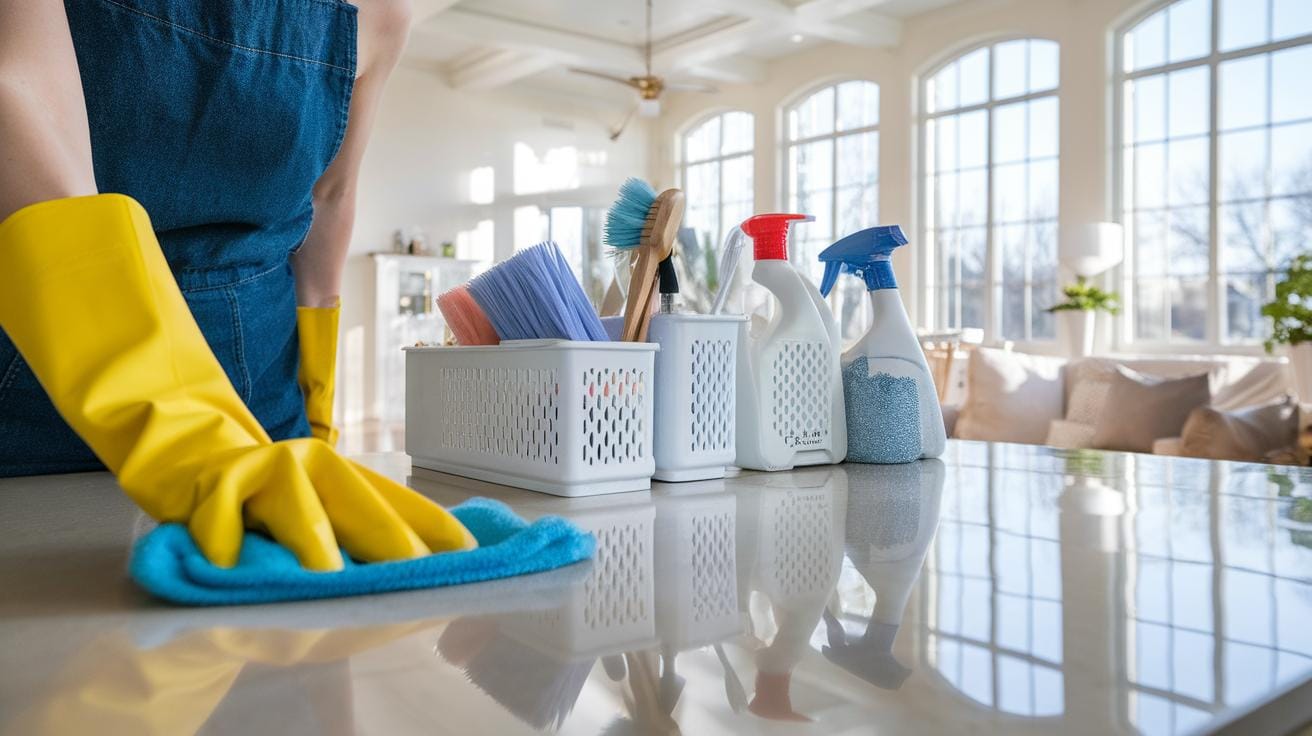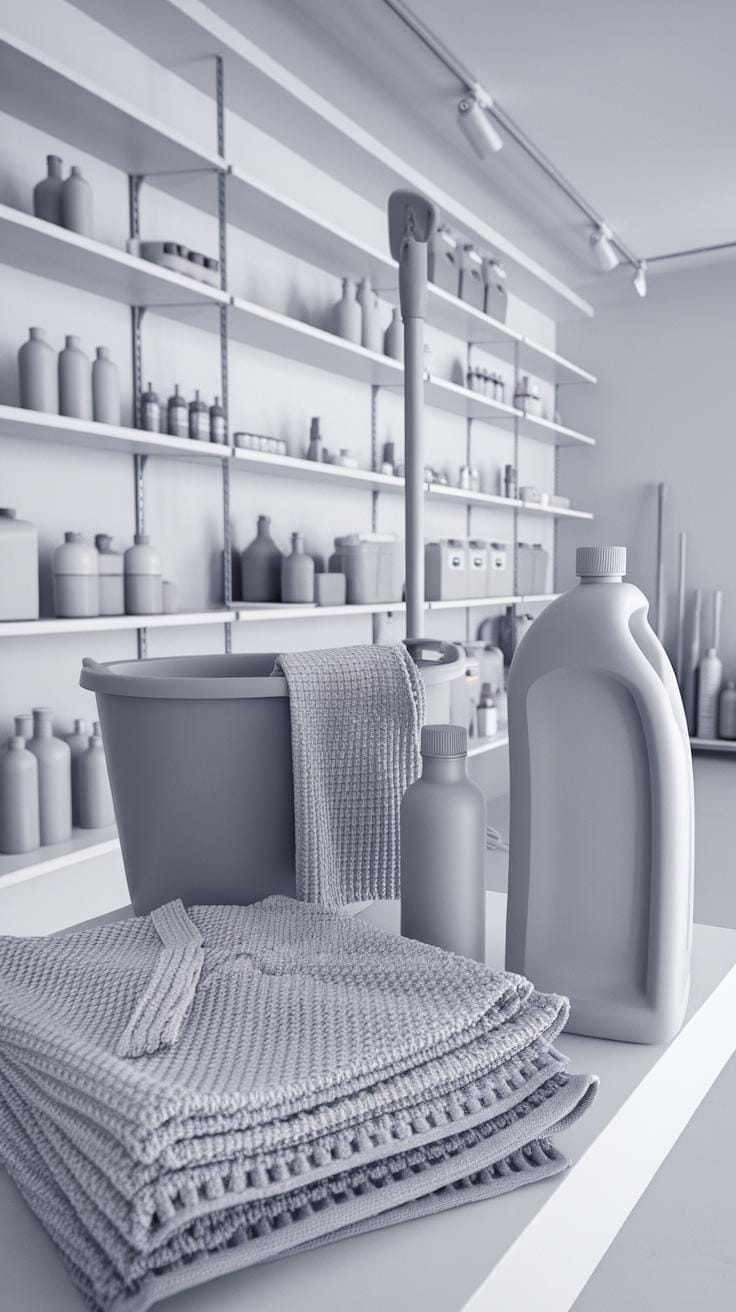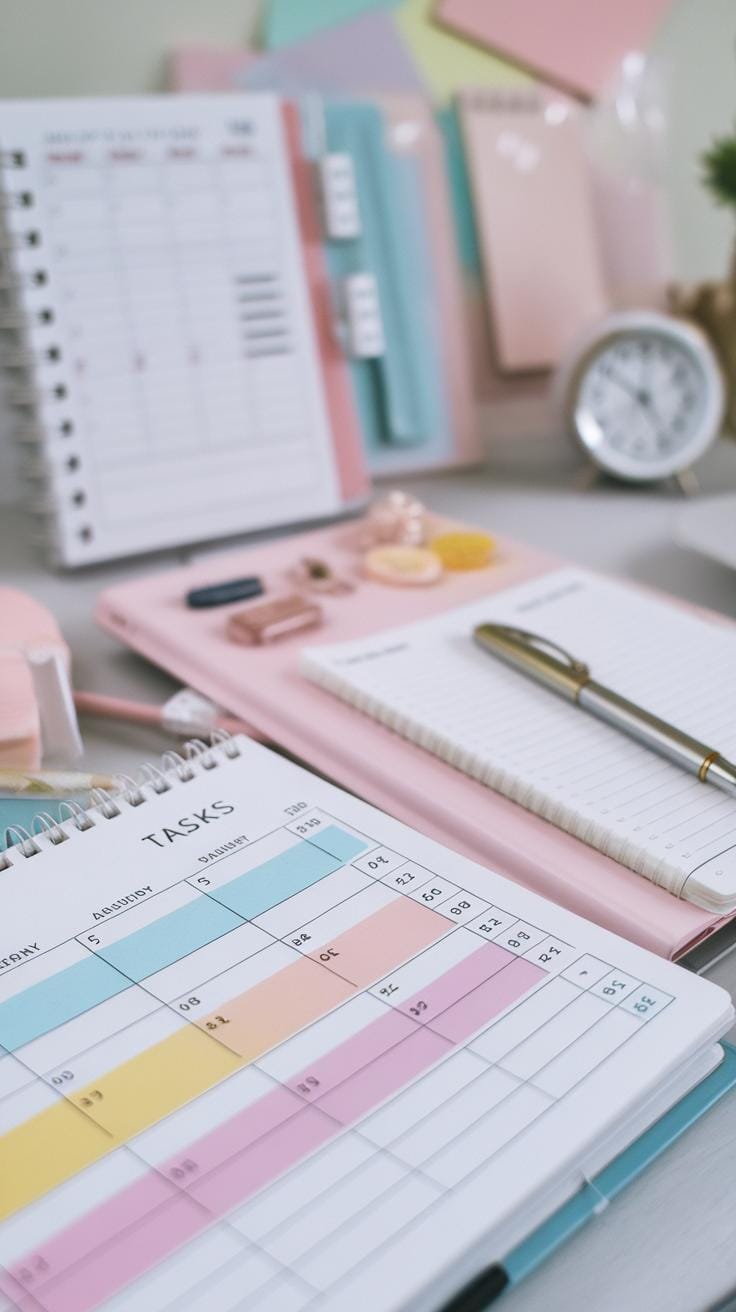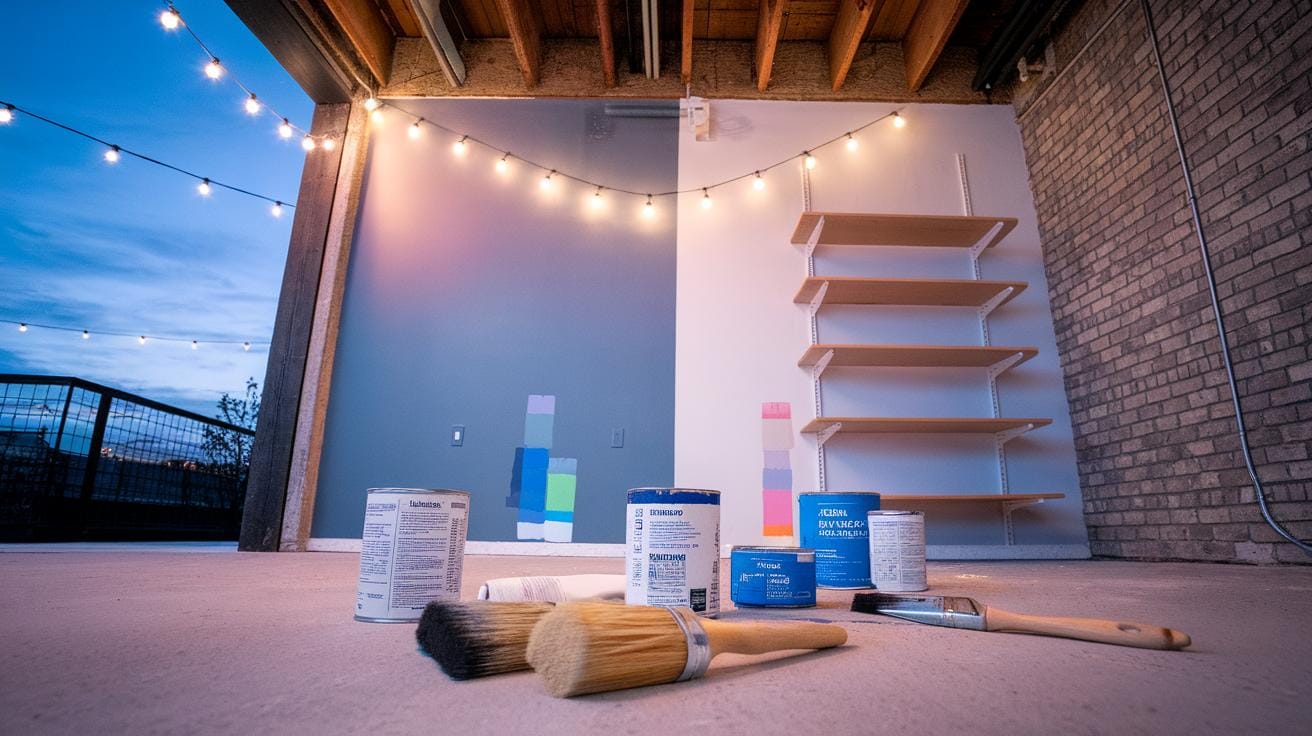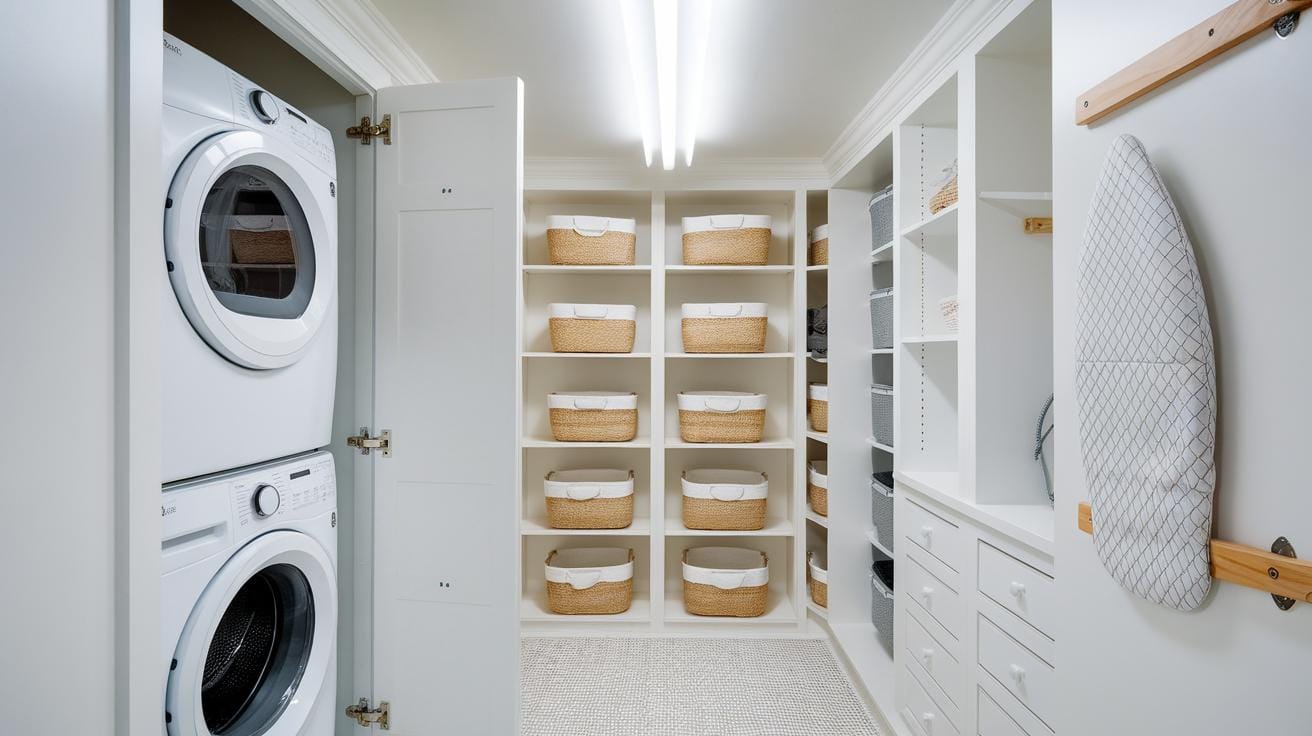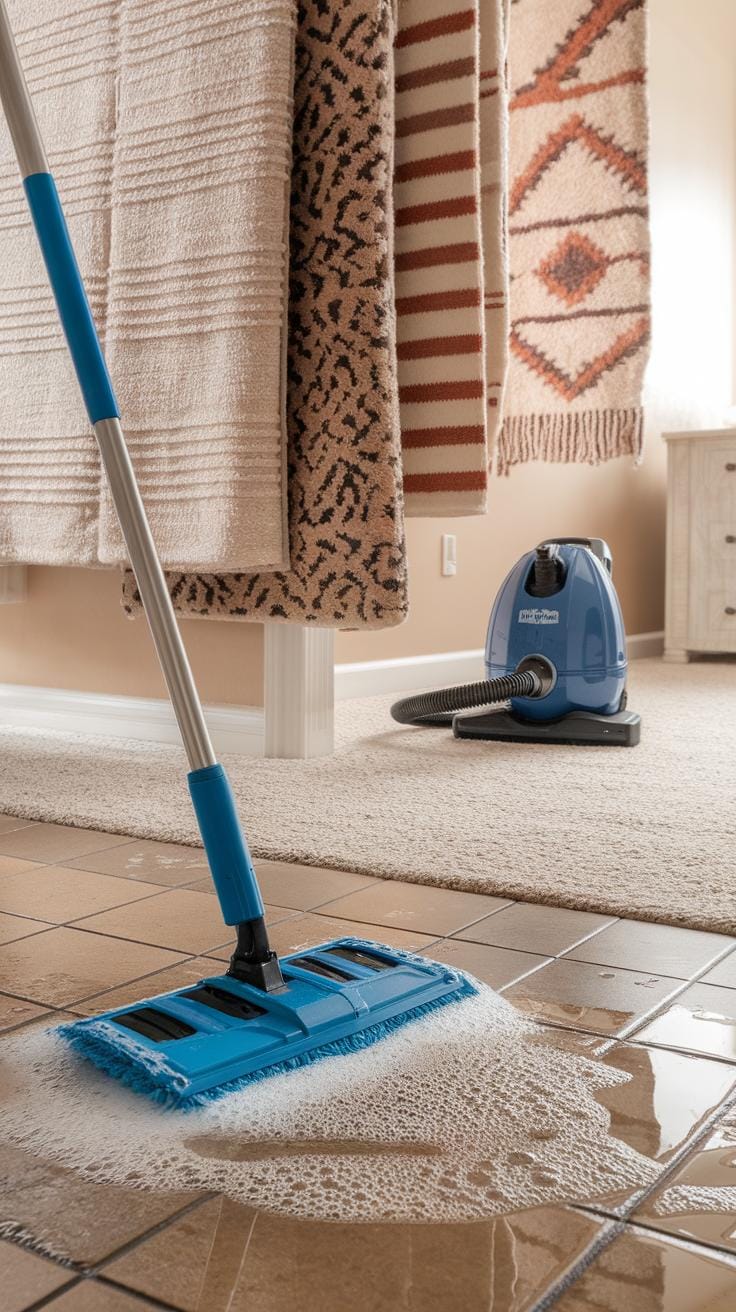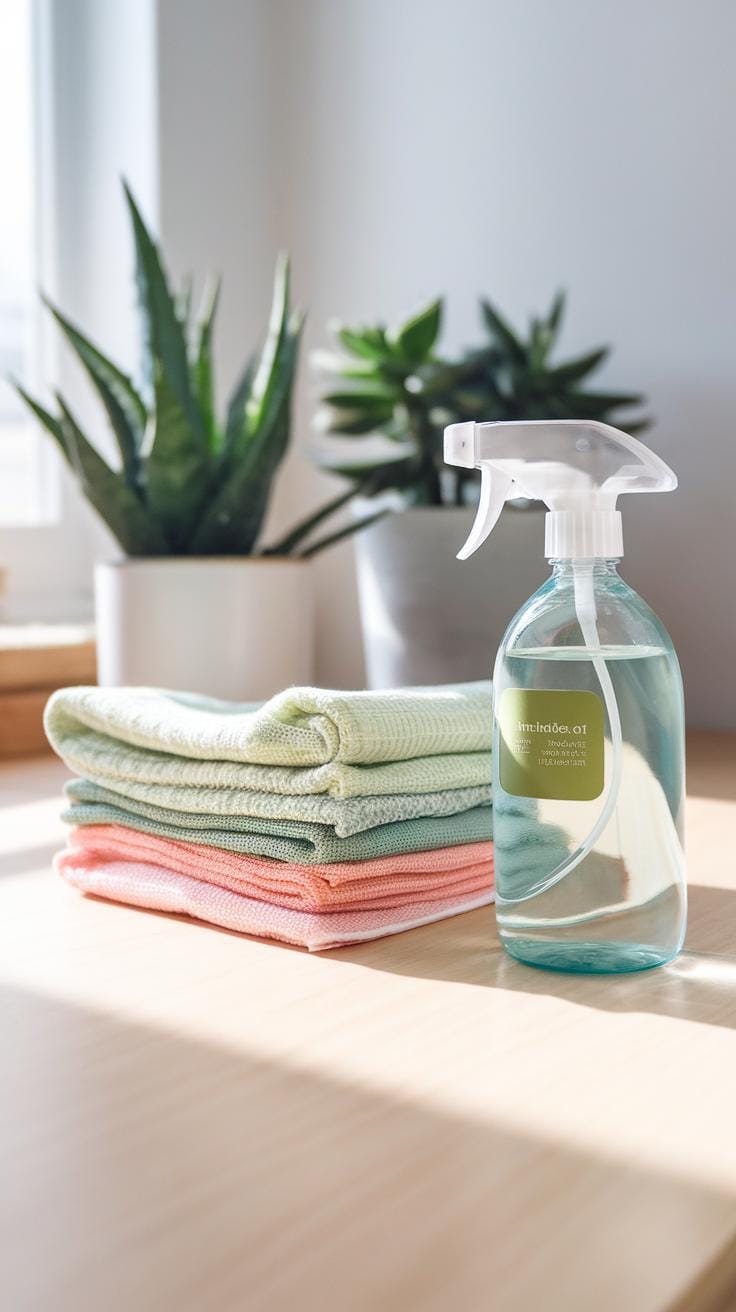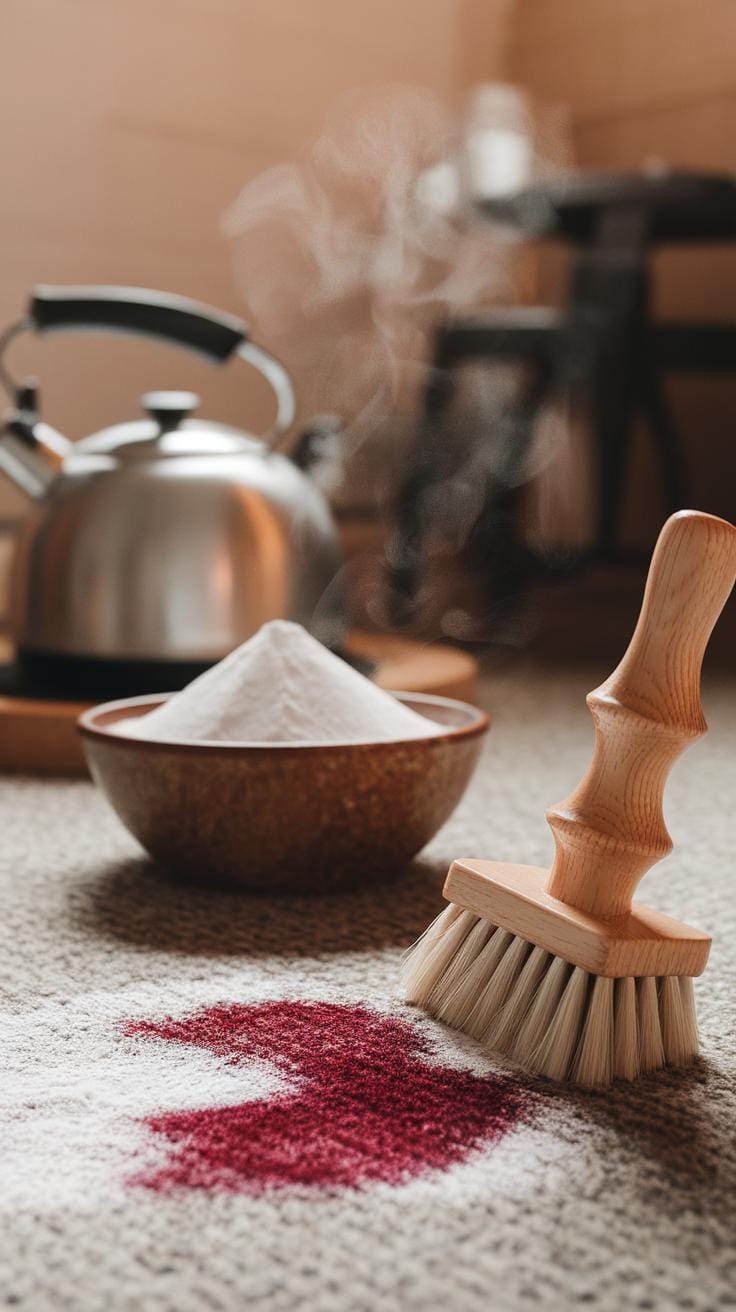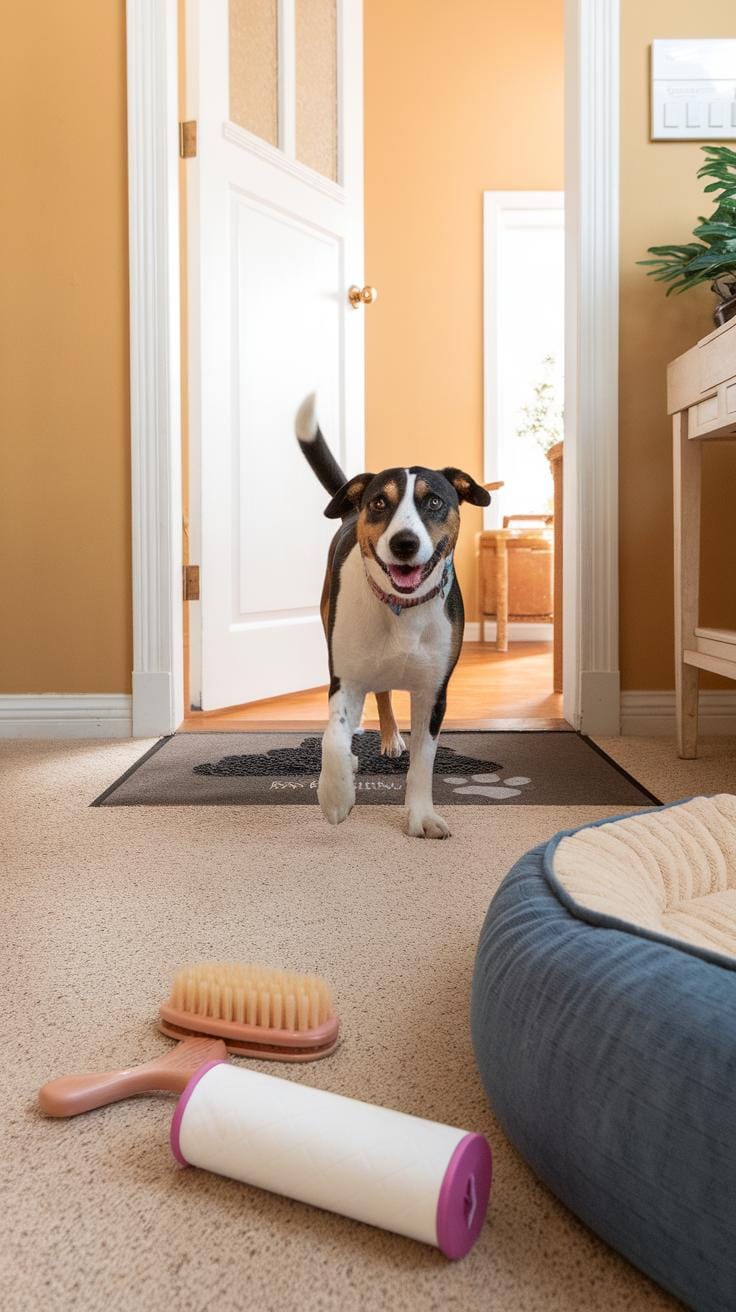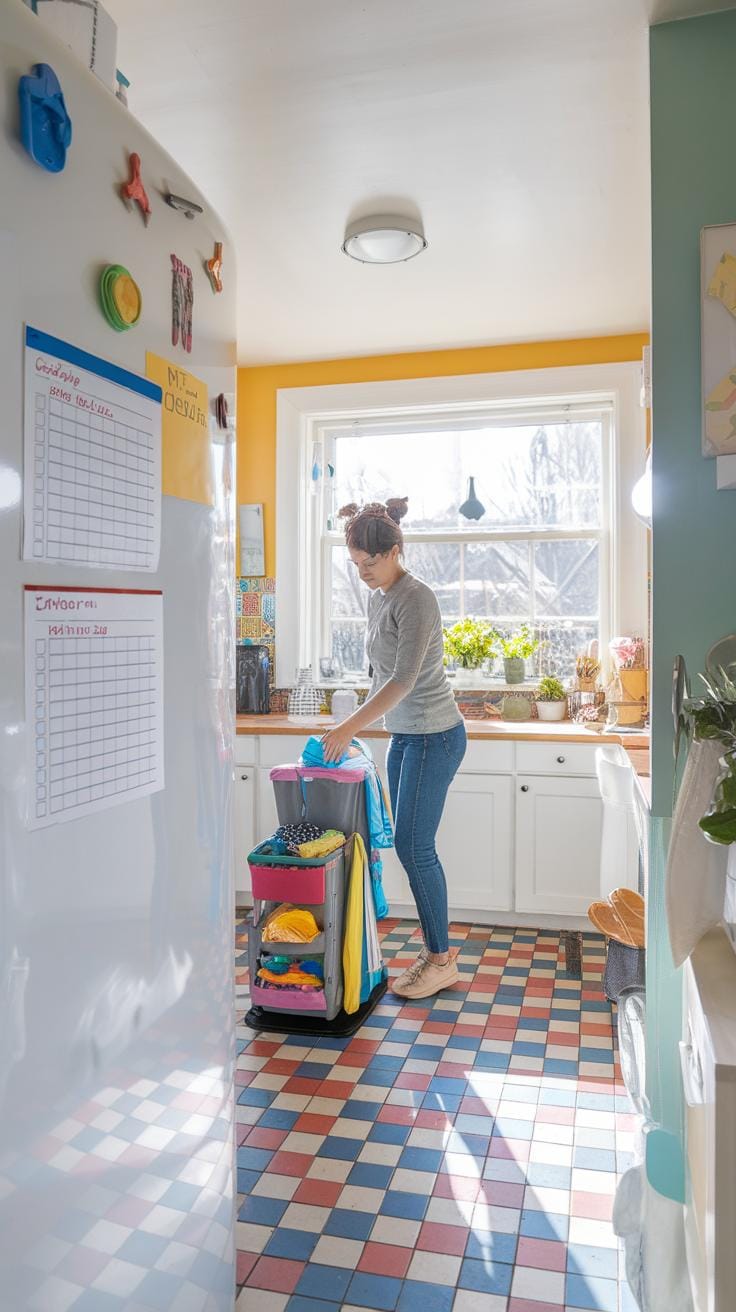Introduction
Maintaining a clean home requires consistent effort and the right techniques. A sparkling home creates a welcoming atmosphere and supports your well-being by reducing allergens and improving air quality. Understanding practical and effective cleaning approaches can transform your routine and help you keep every room spotless. This article guides you through essential casa clean techniques, ensuring your home stays clutter-free and polished.
Cleaning involves removing dirt, germs, and other impurities to make spaces functional and safe. It is a routine task that combines various methods like washing, wiping, and vacuuming to maintain hygiene. Learning the right tools and strategies simplifies this work. Here, you will find step-by-step processes, smart tips for housekeeping, and ways to organize your cleaning schedule. These insights will help you manage your home efficiently and enjoy a fresher environment.
Understanding the Basics of Casa Cleaning
Casa cleaning means keeping your home free from dirt, germs, and clutter using simple, regular actions. You clean not just to make your home look good but to keep it safe and healthy. Dirt and germs build up quickly in places you might not notice, like corners, kitchen counters, and bathrooms. These can cause illnesses and allergies if left unchecked.
Common contaminants include dust, food crumbs, pet dander, and bacteria. Cleaning removes these by wiping, sweeping, vacuuming, or scrubbing. Each method tackles different types of dirt—dust settles on surfaces, food particles attract pests, and bacteria spread germs. How often do you clean spots like door handles or light switches? These are hotspots for germs.
Regular cleaning also protects your belongings. Dust and grime can wear out furniture and appliances faster. Keeping up with simple cleaning prevents damage and keeps your home fresh daily. Think about how your home feels when it’s cleaned often. Doesn’t it invite better breathing and a calmer mood?
Importance of a Clean Home
Keeping your home clean helps reduce allergens such as dust mites and mold. These tiny irritants can trigger coughing, sneezing, or skin reactions. By cleaning, you remove triggers and help everyone breathe better. Does your home have carpets or rugs? These can hide allergens that cause discomfort for sensitive family members.
A clean home lowers the risk of illnesses. Germs on kitchen counters or bathroom sinks spread colds and flu. Wiping surfaces regularly breaks the chain of infection. Your living space also feels more comfortable when it’s tidy. A clutter-free home can ease stress and make daily tasks easier. How does your mood change in a messy room compared to a clean one?
Good hygiene through cleaning also prevents pest problems. Crumbs or spills invite ants and cockroaches. Removing food waste quickly keeps unwanted visitors away. Maintaining cleanliness saves you money by avoiding repairs and replacements. When you clean on a schedule, your home stays healthier and more welcoming for you and your guests.
Common Household Contaminants
Different areas of your home hold different types of dirt and bacteria. The kitchen often has food particles and grease that attract bacteria. Bathrooms contain germs from moisture and waste. Dust gathers in living rooms and bedrooms on floors, shelves, and upholstery. These particles travel in the air, affecting indoor air quality.
Pet hair and dander add to the mix, especially if you have animals. These can cause allergies or worsen asthma symptoms. Floors and carpets trap soil and tiny bugs that brushing or vacuuming removes. Kitchen sponges and cleaning cloths can also harbor bacteria if not cleaned or replaced often.
Surfaces we touch frequently, like doorknobs and light switches, are breeding grounds for germs. What steps do you take to keep these spots clean? Regular cleaning breaks down dirt and destroys harmful microbes, making your home safer to live in. Knowing where contaminants hide helps you focus your cleaning efforts where they matter most.
Tools and Supplies You Need to Clean Efficiently
Selecting the right tools and supplies makes a big difference in your casa cleaning. You need items that match different surfaces and dirt types to clean faster and better.
Mops are essential for floors. Use microfiber mop heads to trap dust and dirt instead of just moving it around. For carpets, a vacuum cleaner with strong suction and different attachments helps remove dust, hair, and allergens.
Microfiber cloths work well on countertops, glass, and furniture because they pick up dust and grime without scratching. Brushes in various sizes help you reach small corners and grout lines.
Choosing the proper cleaning agents is key. Kitchen areas often need degreasers, while bathrooms require disinfectants to fight germs. Use gentle cleaners for wood and upholstery to avoid damage.
Have you noticed how your cleaning gets stuck when the wrong tool is used? Invest in the right supplies to avoid wasting time and effort.
Choosing the Right Cleaning Products
Not all cleaning products are safe or effective for every part of your home. For kitchens, pick degreasers that break down oils without harsh smells or residue. Read labels to avoid chemicals that leave a sticky film.
Bathrooms benefit from disinfectants with ingredients like bleach or hydrogen peroxide that kill germs on tiles and toilets. Avoid mixing products that can create harmful fumes.
When cleaning floors, match your product to the material. Hardwood floors need pH-neutral cleaners to prevent dullness. Avoid soaking wood with too much water. For tile and vinyl, stronger cleaners remove stains well.
Fabric and upholstery require special care. Use mild detergents designed for fabrics or upholstery sprays that refresh without damaging fibers. Spot test a small area before full cleaning.
Ask yourself if the product will protect your surfaces or cause damage. Choosing wisely keeps your home clean and surfaces lasting longer.
Cleaning Tools and Their Uses
Knowing how to use your cleaning tools improves results and saves time. Microfiber cloths work best when slightly damp. Dry cloths only move dust around. Clean cloths often to avoid spreading dirt.
Vacuum cleaners with adjustable settings help you switch between carpet, hardwood, and upholstery. Use the brush attachment on delicate fabric and crevice tools to reach narrow spots. Empty the vacuum bag or container regularly to keep suction strong.
Brushes help loosen dirt in grout, corners, and textured surfaces. Scrub gently on soft surfaces to avoid scratches. Using the right brush size for each task improves cleaning without damage.
Use mops by moving them in straight lines or figure-eights, not random back and forth. This technique traps dirt without pushing it around. Rinse mop heads often to avoid spreading grime.
Have you tried cleaning without the right tool for the job? Mastering these tool uses turns cleaning from a chore to a quick, effective task.
Organizing Your Cleaning Schedule
Creating a cleaning schedule helps you keep your home tidy without feeling overwhelmed. Start by considering your daily routines and how much time you can dedicate to cleaning. You don’t have to clean everything every day. Break tasks into daily, weekly, and monthly activities to stay on track.
For daily tasks, focus on quick habits that prevent mess buildup. Weekly tasks should include more thorough cleaning in high-use areas. Monthly chores target less visible spots that accumulate dust or grime over time. Ask yourself: Which cleaning tasks fit your lifestyle? What times work best for you to clean?
You might clean your kitchen counters every day but vacuum only once a week. Adjust your schedule based on your home size, family needs, and work hours. Using a simple calendar or app to list tasks helps you remember and complete them. Planning this way keeps cleaning manageable and your home consistently fresh.
Daily Cleaning Tasks
Set aside a few minutes each day for small cleaning actions. Wipe down kitchen surfaces after cooking to stop stains and crumbs from piling up. Make your bed every morning to instantly improve your bedroom’s look. Take a moment to tidy clutter in living spaces, putting things where they belong.
Empty trash bins before they overflow. Sweep or spot clean floors if you notice dirt or crumbs. These short tasks keep your home organized and stop messes from becoming bigger jobs. Think about how a five-minute daily habit could make cleaning easier later on.
Weekly and Monthly Deep Cleaning
Reserve one or two days a week for deeper cleaning. Dust ceiling fans, clean mirrors, mop floors, and vacuum furniture to remove hidden dirt. Change bed linens and clean bathroom tiles to maintain hygiene. Once a month, focus on heavier tasks like washing windows, cleaning inside appliances, or scrubbing baseboards.
These sessions refresh the less visible parts of your home where dirt tends to gather. Have you checked those areas lately? Planning these tasks ahead helps keep your home healthier and prevents grime from becoming tougher to remove. Scheduling deep cleaning ensures no corner stays neglected.
Room by Room Cleaning Techniques
Each room in your home requires different cleaning approaches based on its surfaces and usual messes. The kitchen demands careful attention to food spills, grease, and bacteria. The bathroom needs solutions for soap buildup, mold, and mineral deposits. Bedrooms benefit from dust control and fabric care. Living rooms often face dust, pet hair, and clutter.
Using the right cleaning methods saves time and improves results. Choosing suitable cleaners and tools for each surface keeps your home healthier and looking sharp. Have you noticed how some spills stick more stubbornly depending on the surface? Adapting your routine lets you handle these challenges without stress.
Identifying key trouble spots in each room helps you focus your efforts. This way, you avoid wasting time and keep every corner neat. How could customizing cleaning speed up your routine?
Kitchen Cleaning Strategies
Kitchens deal with spills, food scraps, and germs daily. Start by wiping countertops with a disinfecting cleaner that suits granite, laminate, or your surface type. Avoid harsh abrasives if you want to maintain shine and prevent damage.
Clean appliances by removing crumbs and fingerprints. Use a microfiber cloth with a gentle cleaner on stainless steel. For your sink, scrub with baking soda to tackle stains, then rinse with vinegar to disinfect and remove odors. Floors need sweeping before mopping with a mild detergent to catch sticky residues from cooking.
Can you spot grease in hidden spots around stove knobs or vent filters? Regular cleaning here stops buildup and fires. When you focus each step on key kitchen tasks, your space gets cleaner and stays safe for food prep.
Bathroom Cleaning Tips
Bathrooms accumulate soap scum, mold, and hard water stains fast. Use a vinegar spray to break down soap scum on tiles and glass surfaces. Let it sit for a few minutes before scrubbing with a soft brush or sponge.
Mold grows in damp corners and grout lines. Scrub these areas with a paste made from baking soda and water or a mold-specific cleaner. Rinse well afterward.
Hard water stains on faucets and showerheads respond to soaking in vinegar or applying lemon juice. This dissolves mineral deposits without harsh chemicals. Regular wiping after use keeps these spots from returning quickly.
Have you checked behind the toilet or under sinks recently? These small areas can hide grime that affects your bathroom’s freshness. Focusing on detailed spots keeps the bathroom healthier and more inviting every day.
Maintaining Floors and Carpets
Keeping your floors clean is a key part of casa clean routines. Each floor type needs specific care to avoid damage and maintain its look. Hardwood, tile, and carpet require different methods for effective cleaning and long life.
Vacuuming regularly removes dirt and grit that can wear down all floor surfaces. For hardwood and tile, avoid harsh cleaners that strip finishes. Instead, use gentle mops with mild soap solutions to clean spills and dirt without leaving streaks or residue.
Spot treatments play a big role in preserving floors. On hardwood, immediately wipe up liquids to prevent warping. On carpets, address stains quickly with appropriate cleaners to stop permanent marks. Deep cleaning carpets on schedule removes trapped dirt and allergens, ensuring a healthy space.
Have you noticed areas of your flooring that wear out faster? Focusing care on these spots can extend your floor’s life significantly. Follow these steps, and your floors will support a clean and healthy home environment for years.
Cleaning Hard Floors
Hardwood floors need special care to keep their finish intact. Use a vacuum with a soft brush attachment to avoid scratches. Mopping with a well-wrung mop and a cleaner made for hardwood keeps dirt off without damaging the wood.
Tile floors handle moisture better but still require gentle cleaning. Sweep or vacuum first to lift loose debris. Use warm water mixed with a mild detergent for mopping. Make sure to dry the floor well to prevent slippery spots and water damage to grout lines.
How often do you clean your hard floors? Regular, gentle cleaning maintains shine and avoids buildup. Avoid waxes or oil-based cleaners unless recommended for your specific floor type, as they can leave residues.
Caring for Carpets and Rugs
Vacuum high-traffic areas every few days to stop dirt from settling deep into carpet fibers. Use attachments to reach edges and under furniture where dust collects. For stains, dab spills immediately with a clean cloth and apply a carpet cleaner made for the stain type.
Routine deep cleaning lifts embedded dirt that regular vacuuming misses. Rent a machine, hire a pro, or use home steam cleaners to refresh your carpets. This helps reduce allergens and keeps fibers soft.
Do you track stain sources in your home? Pinpointing causes can help reduce future spots. Caring well for carpets and rugs supports a cleaner, healthier living space.
Sorting and Decluttering to Simplify Cleaning
Reducing clutter makes cleaning easier and faster. When your home holds fewer items, dust and dirt have fewer places to gather. You spend less time moving things around or looking for misplaced objects. This lets you focus on cleaning key surfaces and floors efficiently.
Removing extra belongings also helps create a calming space. A tidy room feels less stressful and more inviting. You might find it easier to relax and enjoy your home when there’s less visual chaos. How often do you find yourself distracted by clutter instead of feeling peaceful in your rooms?
Start sorting your belongings by setting small goals. Tackle one drawer, shelf, or corner at a time to avoid feeling overwhelmed. Ask yourself if each item serves a purpose or brings you joy. Items that no longer fit your needs can be donated, sold, or recycled. Be honest about what you truly use or want.
You can keep things organized by grouping similar items together. For example, store all books in one place and keep cleaning supplies in a labeled container. Make decluttering a regular habit, scheduling time weekly or monthly to review your spaces. This steady effort prevents clutter from building up again.
EcoFriendly Cleaning Practices
Casa clean means keeping your home fresh and free from harmful chemicals. Choosing eco-friendly methods protects both your living space and the environment. Many common cleaning products include harsh chemicals that can cause indoor air pollution or skin irritation. You can switch to alternatives made from natural ingredients that perform well without these risks.
For example, vinegar, baking soda, and lemon juice are simple yet effective agents. They work on dirt, grime, and odors without leaving harmful residues. Buying cleaning supplies in bulk or reusable containers also helps reduce plastic waste. When you pick your tools, think about reusable cloths instead of disposable wipes, which cut down on landfill garbage.
Consider how often you clean and what you use each time. Are there habits that waste water or electricity during cleaning? Small changes, like using cold water or turning off running taps, save resources while keeping your home spotless. Learning these green practices helps you keep your space healthy for everyone living there and supports sustainable living overall.
Choosing Green Cleaning Products
You don’t have to settle for harsh chemicals to clean your home. Many natural options remove dirt and kill germs. Look for products with ingredients like plant-based soap, essential oils, or mineral-based cleaners. These tend to be safer for your lungs and skin.
Some brands label their products as low-toxicity or biodegradable—these are good signs they are safer indoors. Avoid sprays with artificial fragrances or ammonia, which can cause headaches or worsen allergies. Making your own cleaners with common kitchen staples also works well and costs less.
Have you checked the labels on your current cleaners? Swapping to green products helps reduce harmful chemicals in the air you breathe. It supports a healthier, cleaner home environment without sacrificing performance.
Adopting Sustainable Cleaning Habits
Saving water and energy saves money and eases the strain on the planet. You can maintain a sparkling home while using fewer resources. For example, fill a bucket with water instead of letting the tap run constantly. Rinsing mops and cloths in the bucket uses less water than running them under a faucet.
Try cleaning during daylight hours when possible to reduce the need for electric lights. Using microfiber cloths can cut down on repeated cleaning because they hold more dirt and need less water. Washing cleaning tools only when truly dirty limits the need for frequent laundry cycles, saving energy and water.
How might you change your routine to use less without losing cleanliness? Little adjustments add up over time, making your casa clean routine more sustainable and efficient while protecting your home.
Dealing with Stubborn Stains and Odors
Stains and odors can affect the comfort and cleanliness of your home. Tackling them quickly prevents long-term damage. For tough stains on fabrics or surfaces, start by identifying the stain type. Food stains like tomato sauce respond well to a mix of baking soda and cold water. Apply the paste, let it sit, then gently scrub. Ink stains need rubbing alcohol applied with a cloth, followed by a cold water rinse. Grease stains benefit from dish soap that cuts through oily residues effectively.
Commercial stain removers often contain enzymes that break down proteins in stains. Use them carefully on delicate fabrics. Test any product on a small, hidden area before full application. Are you dealing with paint or dye stains? Specialized removers or nail polish remover can work but require caution.
Odors in your home can linger on carpets, upholstery, and rooms. Neutralize smells by sprinkling baking soda on carpets and vacuuming after 15 minutes. Citrus peels simmered in water freshen rooms naturally. Activated charcoal also absorbs odors when placed in open containers around the house.
For stubborn smells, commercial odor eliminators include sprays and gels containing odor-neutralizing molecules. Use these in rooms with smoke or pet smells. Ventilation stays key to reducing odors, so open windows often.
Which areas of your home hold the toughest smells or stains? Addressing them with the right method can restore freshness and keep your casa inviting and clean.
Effective Stain Removal Techniques
Removing food stains like grease, wine, or chocolate begins with blotting moisture. Avoid rubbing, which spreads the stain. Use cold water for protein-based stains like blood or egg. Warm water tightens proteins, making stains harder to remove.
Ink stains require rubbing alcohol or hand sanitizer applied carefully, then rinsed. For fabric, treat stains quickly with a mixture of white vinegar and dish soap. Grease on hard surfaces cleans well with baking soda paste or liquid dish soap.
Persistent stains might need soaking in oxygen-based bleach, safe for most colors. Always follow product instructions. Have you tried dabbing stains with club soda? It often lifts fresh spots effectively.
Remember to test removers on fabric backings or less visible spots. Timing matters—a fresh stain cleans easier than an old, set one.
Neutralizing Household Odors
Refreshing carpets and upholstery starts with vacuuming to remove trapped particles. Sprinkle baking soda before vacuuming for extra odor absorption. For deeper smells, steam cleaning can remove dirt and eliminate odor sources.
Placing bowls of white vinegar around the home absorbs heavy odors naturally. Citrus and essential oils sprayed lightly into the air can create a pleasant scent without harsh chemicals.
Commercial options include enzyme-based sprays that digest odor-causing bacteria. They work well in pet areas or kitchens. Consider air purifiers with carbon filters to trap and eliminate odors continuously.
When rooms feel stale, open windows for fresh air circulation. Can you smell freshness when you enter your home? Small, daily habits like these keep your living space inviting and clean.
Maintaining Cleanliness with Pets
Pets bring joy but can challenge your efforts to keep a spotless home. Managing fur, odors, and messes requires consistent care and smart techniques tailored to your furry friends. Creating a cleaning routine designed around pet habits helps you avoid overwhelming buildup of hair and allergens in your living spaces.
Brushing your pet regularly reduces loose fur and dander before it settles on furniture or floors. Using tools like a vacuum with a HEPA filter catches tiny particles that trigger allergies. Placing washable covers on sofas and beds protects surfaces and makes cleaning easier. How often do you check those hidden spots where fur gathers, like under cushions or along baseboards?
Dealing with pet odors starts by cleaning accidents immediately with enzymes that break down stains and smells at the source. Airing out rooms and using an air purifier can improve indoor air quality. Choose pet-safe cleaning products that remove odors without harsh chemicals. Creating designated pet areas helps contain messes and simplifies maintenance, so your home stays fresh for both you and your animals.
Managing Pet Hair and Dander
Controlling pet hair means staying ahead with regular grooming sessions. Brushing outside your home reduces the amount of loose fur inside. Vacuum floors and furniture at least twice a week using a vacuum designed to pick up hair and reduce allergens.
Use rubber gloves or lint rollers to remove hair from upholstery and clothes. Wash pet bedding frequently to stop dander buildup. Installing air purifiers with HEPA filters traps airborne particles that can irritate your lungs. How does your current cleaning routine address invisible allergens?
Controlling Pet Odors and Messes
Handling accidents requires quick action. Blot liquids immediately rather than rubbing, which can spread stains and odors. Enzyme cleaners break down proteins in urine or vomit that cause lingering smells. Wash or spray fabrics with these products as soon as possible for best results.
Keep pet toys and feeding areas clean to prevent odor buildup. Regularly empty litter boxes or cages, and place them away from living spaces if you can. Ventilate rooms daily to reduce trapped smells. Have you identified all the spots where odors hide in your home?
Creating LongLasting Cleanliness Habits
Keeping your home clean over time depends on building habits that fit your lifestyle. Start by setting small, clear tasks that become part of your daily rhythm. Rather than tackling everything at once, focus on consistent actions like wiping down counters or putting away items after use. This approach makes cleaning less stressful and more manageable.
Ask yourself what motivates you to maintain a tidy space. Maybe you want to reduce allergens, create a peaceful environment, or save time on weekend cleaning. Use these reasons to remind yourself why daily effort matters. Setting achievable goals, such as completing a five-minute task each day, helps form steady discipline.
Try keeping a checklist or setting phone reminders to stay on track. Reward yourself when you reach milestones—a clean home should feel rewarding, not just another chore. What small change could make your cleaning routine easier? Reflect on what works best for you and adjust as needed.
Building Daily Cleaning Habits
Integrate tiny cleaning habits into your everyday schedule to avoid large chores piling up. For example, clean as you cook by washing dishes or wiping spills immediately. Sort mail or laundry in short bursts to prevent clutter from growing.
Choose one room to tidy for five minutes each day rather than cleaning the whole house at once. This keeps tasks from feeling overwhelming while maintaining steady progress. Can you add a simple step like making your bed right after waking up? Such small habits add up quickly.
Keep cleaning supplies nearby for quick access. When you see a mess, tackle it without delay. Moving cleaning into bite-sized moments turns it into a habit instead of a one-time effort.
Staying Motivated and Consistent
Consistency in cleaning comes from clear goals and reminders. Set specific targets like vacuuming twice a week or decluttering a drawer monthly. Writing your goals down shows your commitment.
Use reminders on your phone or calendar to prompt actions. Pair cleaning with enjoyable activities, such as listening to music or an audiobook. Find ways to reward yourself after completing chores, like enjoying a favorite snack or a short break.
Think about why you want a clean home. Keep those reasons in mind to push through days when motivation fades. What rewards motivate you enough to keep cleaning as a part of your routine? Tailor your system so it fits your preferences and lifestyle perfectly.
Conclusions
Sticking to effective cleaning methods prevents buildup of dirt and preserves your home’s condition. Regular housekeeping ensures your space remains organized and comfortable. Prioritize tasks based on frequency and the level of dirt to maximize your efforts. Use products and tools suitable for each surface to achieve the best results quickly. The tips shared can reduce stress and save time by avoiding repeated cleaning sessions.
A sparkling home directly impacts your lifestyle by promoting health and happiness. Following the techniques discussed, you can maintain cleanliness without feeling overwhelmed. A structured plan that includes daily upkeep, deep cleaning sessions, and decluttering will keep your home inviting and tidy. Clean spaces support strong habits and improve the overall appearance of your living environment.

